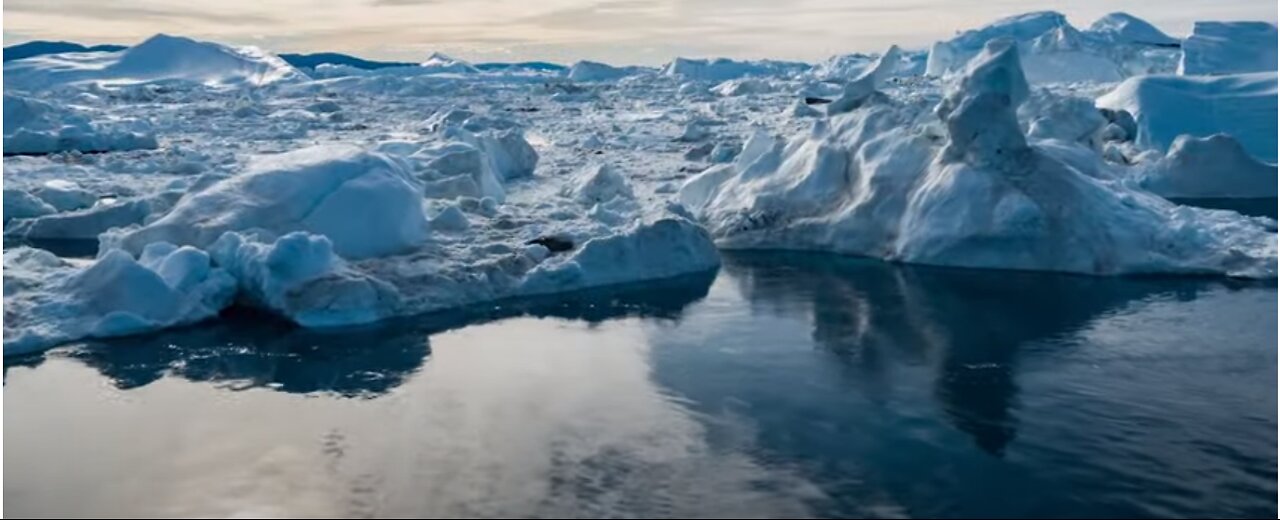Premium Only Content

A Mission to Better Understand Earth’s Polar Regions (Mission Overview)
#nasa #NASAprefiremission #prefire #earth #earthexploration #climate #climatechange #globalregion #polar #polarregion #polarenergy #FarInfrared#experiment #ractic #antarictic #tropics #tropicregion #sunenergy #wolfchamp
A Mission to Better Understand Earth’s Polar Regions (Mission Overview)
NASA’s PREFIRE mission aims to improve global climate change predictions by expanding our understanding of heat loss at the polar regions. The Polar Radiant Energy in the Far-InfraRed Experiment (PREFIRE) will send two shoebox-size satellites into space to study the Arctic and Antarctic. They’ll be the first to systematically measure heat in the form of far-infrared radiation emitted from those regions.
Earth absorbs much of the Sun’s energy at the tropics. Weather and ocean currents then move that heat toward the poles, which help regulate Earth’s climate by radiating that heat back into space. But the Arctic is warming about three times faster than anywhere else on Earth, and that’s leading to increased ice sheet melt and sea level rise in coastal communities. The data from PREFIRE will help scientists better understand how Earth’s polar regions respond to climate change and what that might mean for the future.
For more information: https://science.nasa.gov/mission/prefire
Credit: NASA/JPL-Caltech/University of Wisconsin
A Mission to Better Understand Earth’s Polar Regions (Mission Overview)
NASA’s PREFIRE mission aims to improve global climate change predictions by expanding our understanding of heat loss at the polar regions. The Polar Radiant Energy in the Far-InfraRed Experiment (PREFIRE) will send two shoebox-size satellites into space to study the Arctic and Antarctic. They’ll be the first to systematically measure heat in the form of far-infrared radiation emitted from those regions.
Earth absorbs much of the Sun’s energy at the tropics. Weather and ocean currents then move that heat toward the poles, which help regulate Earth’s climate by radiating that heat back into space. But the Arctic is warming about three times faster than anywhere else on Earth, and that’s leading to increased ice sheet melt and sea level rise in coastal communities. The data from PREFIRE will help scientists better understand how Earth’s polar regions respond to climate change and what that might mean for the future.
For more information: https://science.nasa.gov/mission/prefire
Credit: NASA/JPL-Caltech/University of Wisconsin
A Mission to Better Understand Earth’s Polar Regions (Mission Overview)
NASA’s PREFIRE mission aims to improve global climate change predictions by expanding our understanding of heat loss at the polar regions. The Polar Radiant Energy in the Far-InfraRed Experiment (PREFIRE) will send two shoebox-size satellites into space to study the Arctic and Antarctic. They’ll be the first to systematically measure heat in the form of far-infrared radiation emitted from those regions.
Earth absorbs much of the Sun’s energy at the tropics. Weather and ocean currents then move that heat toward the poles, which help regulate Earth’s climate by radiating that heat back into space. But the Arctic is warming about three times faster than anywhere else on Earth, and that’s leading to increased ice sheet melt and sea level rise in coastal communities. The data from PREFIRE will help scientists better understand how Earth’s polar regions respond to climate change and what that might mean for the future.
For more information: https://science.nasa.gov/mission/prefire
Credit: NASA/JPL-Caltech/University of Wisconsin
A Mission to Better Understand Earth’s Polar Regions (Mission Overview)
NASA’s PREFIRE mission aims to improve global climate change predictions by expanding our understanding of heat loss at the polar regions. The Polar Radiant Energy in the Far-InfraRed Experiment (PREFIRE) will send two shoebox-size satellites into space to study the Arctic and Antarctic. They’ll be the first to systematically measure heat in the form of far-infrared radiation emitted from those regions.
Earth absorbs much of the Sun’s energy at the tropics. Weather and ocean currents then move that heat toward the poles, which help regulate Earth’s climate by radiating that heat back into space. But the Arctic is warming about three times faster than anywhere else on Earth, and that’s leading to increased ice sheet melt and sea level rise in coastal communities. The data from PREFIRE will help scientists better understand how Earth’s polar regions respond to climate change and what that might mean for the future.
For more information: https://science.nasa.gov/mission/prefire
Credit: NASA/JPL-Caltech/University of Wisconsin
A Mission to Better Understand Earth’s Polar Regions (Mission Overview)
NASA’s PREFIRE mission aims to improve global climate change predictions by expanding our understanding of heat loss at the polar regions. The Polar Radiant Energy in the Far-InfraRed Experiment (PREFIRE) will send two shoebox-size satellites into space to study the Arctic and Antarctic. They’ll be the first to systematically measure heat in the form of far-infrared radiation emitted from those regions.
Earth absorbs much of the Sun’s energy at the tropics. Weather and ocean currents then move that heat toward the poles, which help regulate Earth’s climate by radiating that heat back into space. But the Arctic is warming about three times faster than anywhere else on Earth, and that’s leading to increased ice sheet melt and sea level rise in coastal communities. The data from PREFIRE will help scientists better understand how Earth’s polar regions respond to climate change and what that might mean for the future.
For more information: https://science.nasa.gov/mission/prefire
Credit: NASA/JPL-Caltech/University of Wisconsin
-
 LIVE
LIVE
Josh Pate's College Football Show
5 hours ago $0.59 earnedCFP Prediction Special: OhioSt vs Oregon | UGA vs Notre Dame | Texas vs ASU | Boise vs PennSt
927 watching -
 LIVE
LIVE
Scottish Viking Gaming
3 hours ago💚Rumble :|: SUNDAY FUNDAY :|: Virginia has two Verginers, Change my Mind!
815 watching -
 1:49:50
1:49:50
Winston Marshall
2 days agoThe DARK Reality of Socialism - Historian Giles Udy
14.1K33 -
 DVR
DVR
Sports Wars
2 hours agoBengals STAY ALIVE In OT Thriller, ESPN's Ryan Clark SLAMMED, NFL DESTROYS NBA On Christmas
8.31K1 -
 9:37
9:37
EvenOut
19 hours ago $1.83 earnedThe Non-Reflecting Mirror Scare Twin Prank!
13.3K1 -
 11:19
11:19
Tundra Tactical
18 hours ago $2.25 earnedI Saw How CMMG Makes Guns.
15.9K6 -
 15:34
15:34
Misha Petrov
14 hours agoReacting To TikTok’s Most DELUSIONAL Takes!
18.1K17 -
 1:52:24
1:52:24
Squaring The Circle, A Randall Carlson Podcast
1 day ago#032 Flournoy Holmes' Artwork Helped Define The Southern Rock Phenomenon of The Early 1970's
15.6K3 -
 19:56
19:56
inspirePlay
1 day ago $0.21 earnedWalking with Lions & Facing Africa’s Wild Side | Safari Adventure with the Grid Championship Crew!
8.97K -
 10:50
10:50
RTT: Guns & Gear
1 day ago $0.72 earnedBudget Friendly Carry 2011: EAA Girsan Brat 2311
10.6K3